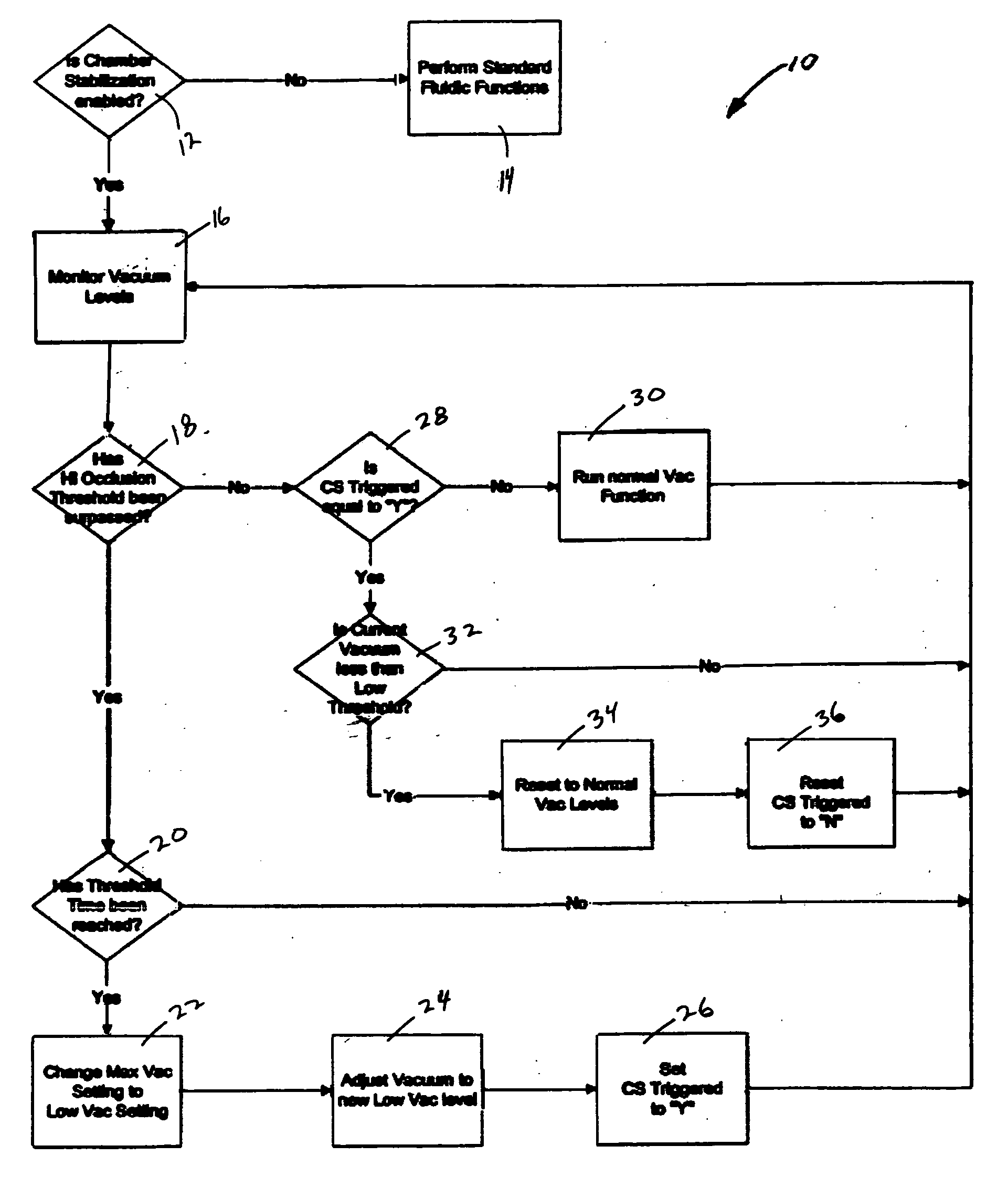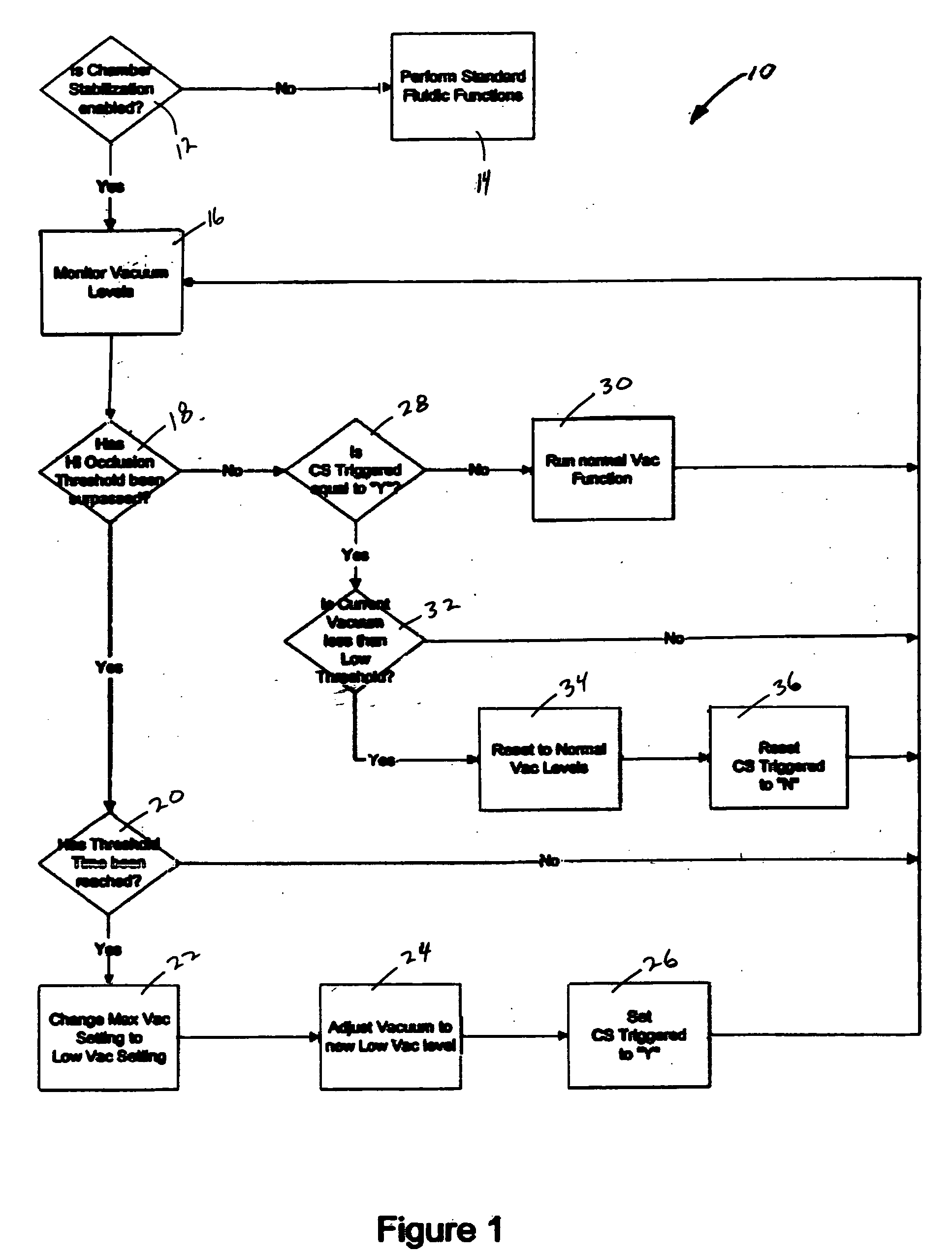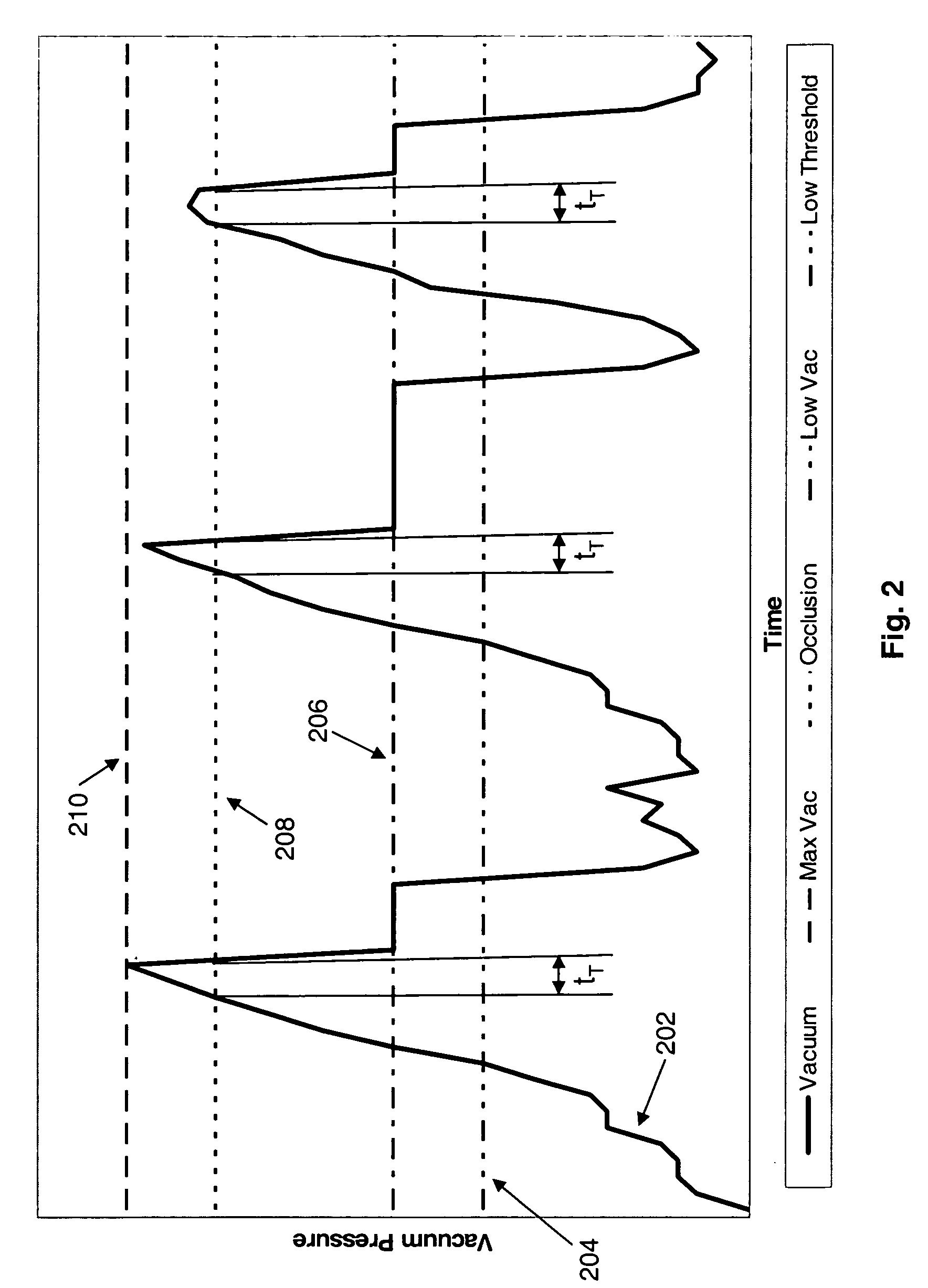Application of vacuum as a method and mechanism for controlling eye chamber stability
a technology of eye chamber and vacuum, applied in the field of surgical methods, can solve the problems of greater vacuum, negative pressure in the aspiration line, increased vacuum, etc., and achieve the effect of increasing the level of aspiration for
- Summary
- Abstract
- Description
- Claims
- Application Information
AI Technical Summary
Benefits of technology
Problems solved by technology
Method used
Image
Examples
Embodiment Construction
[0025] As illustrated in FIG. 1, a block diagram 10 sets forth a method in accordance with the present invention. It should be appreciated that the present method applies to controlling at least one of: 1) the supplied irrigation fluid, 2) vacuum, 3) aspiration rate, and 4) the power applied to a handpiece in an ophthalmic surgery procedure. Only one of the control features being set forth for the sake of brevity. The aspiration force may be provided by any type of fluid pump, including flow pumps and vacuum pumps.
[0026] As shown in FIG. 1, a system or method may include a pre-determined or user-chosen setting (for example, a setting labeled here as “Chamber Stabilization” or “CS”) to turn on or off the various embodiments of the present invention. If a user turns off this CS setting (i.e. CS is not enabled (12)), then standard fluidic functions (14) are performed without the benefit of the embodiments described herein.
[0027] In accordance with a method of the present invention du...
PUM
 Login to View More
Login to View More Abstract
Description
Claims
Application Information
 Login to View More
Login to View More - R&D
- Intellectual Property
- Life Sciences
- Materials
- Tech Scout
- Unparalleled Data Quality
- Higher Quality Content
- 60% Fewer Hallucinations
Browse by: Latest US Patents, China's latest patents, Technical Efficacy Thesaurus, Application Domain, Technology Topic, Popular Technical Reports.
© 2025 PatSnap. All rights reserved.Legal|Privacy policy|Modern Slavery Act Transparency Statement|Sitemap|About US| Contact US: help@patsnap.com



